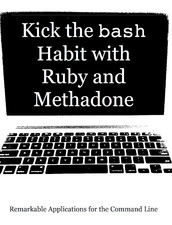Five Months of eBook Sales
April 24, 2012
I really enjoyed reading Jesse Storimer’s recent post, 4 Months of ebook Sales, about the sales of his book “Working with Unix Processes”. His feelings echo my own regarding my book, “Build Awesome Command-Line Applications in Ruby”:
I’m ecstatic with the results so far, but I have no idea how they compare.
Our books complement each other quite well, and came out around the same time. He wrote his largely on his own, going the self-publishing route, while I wrote mine with the Pragmatic Programmers. I thought I’d write a similar piece from my experience going the “traditional” route.

